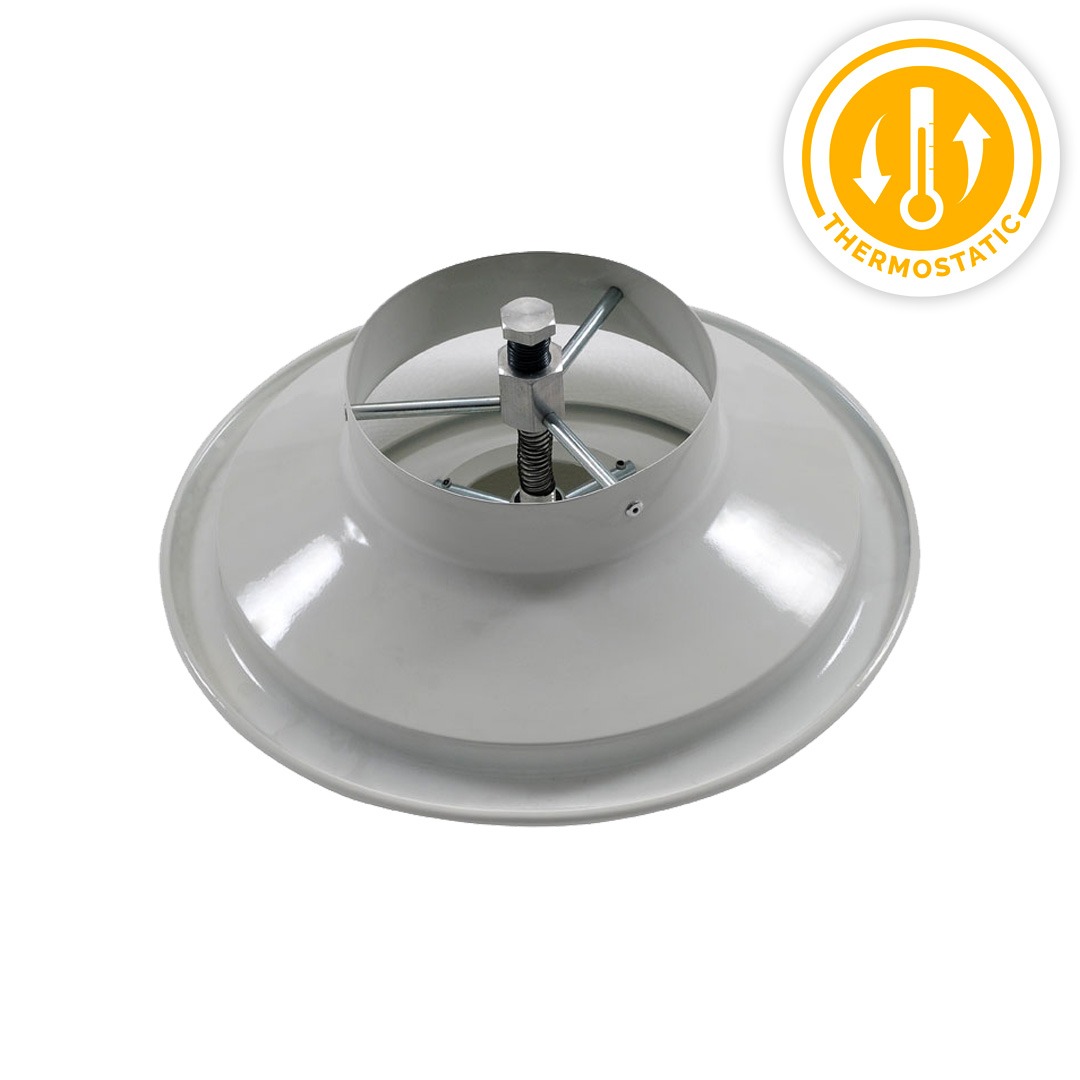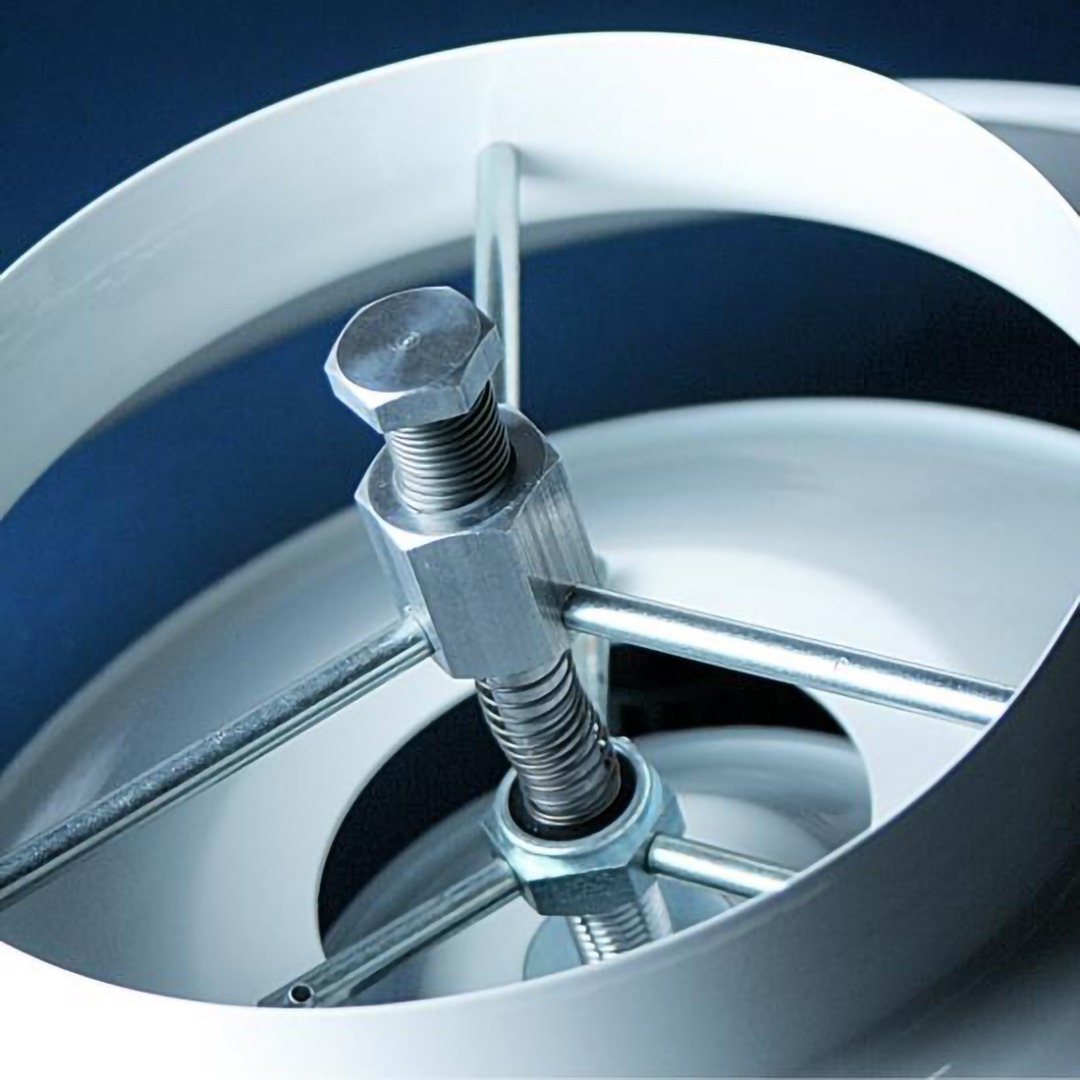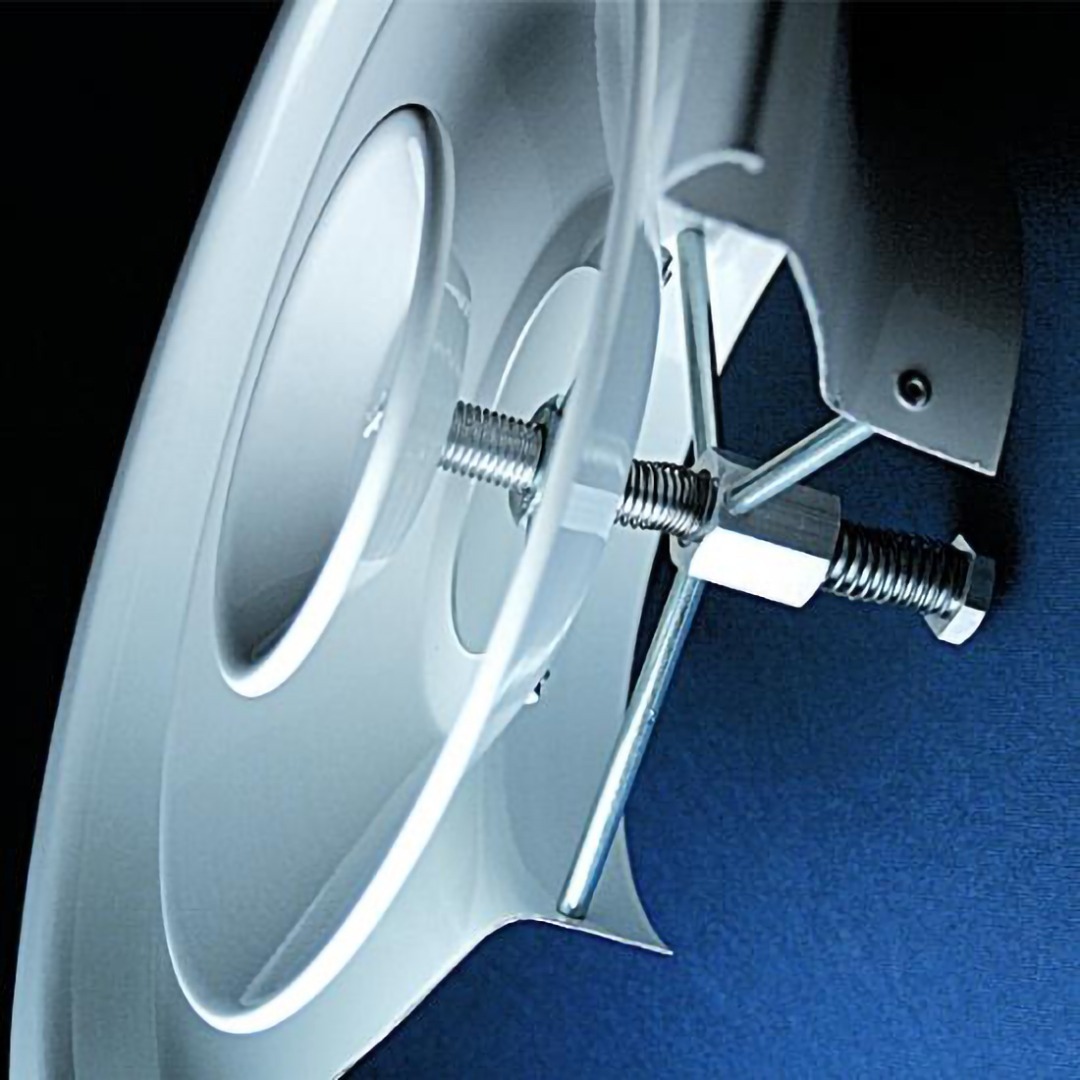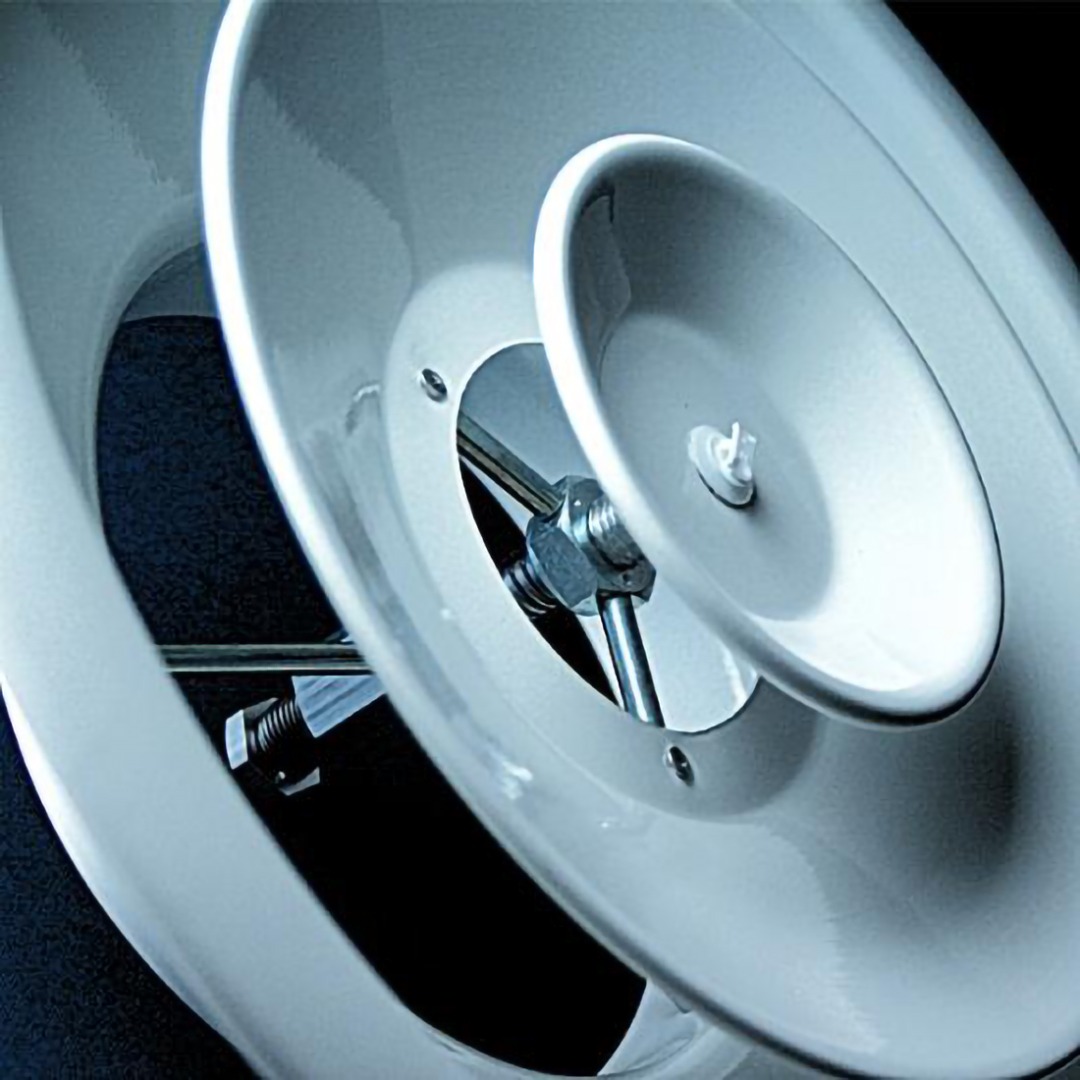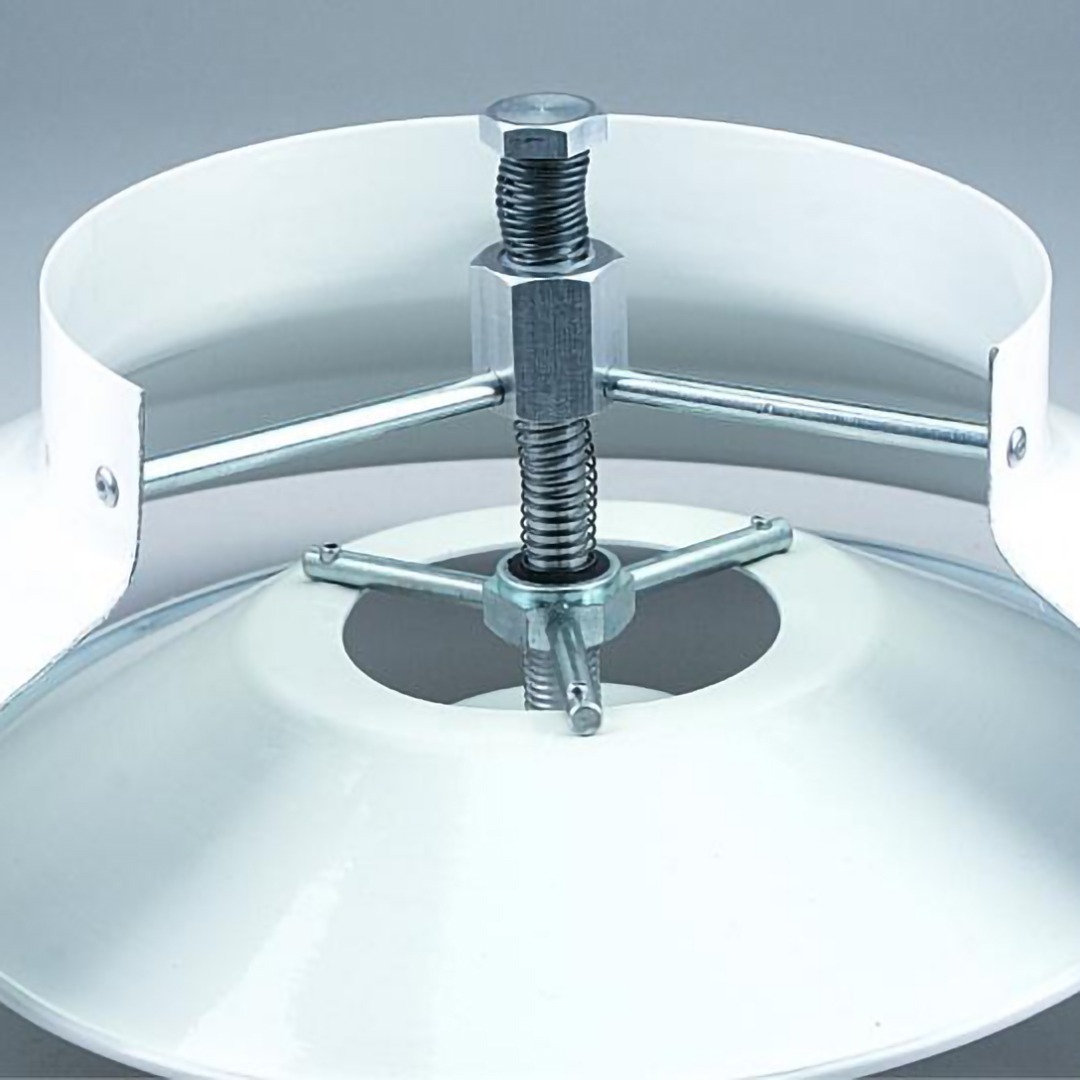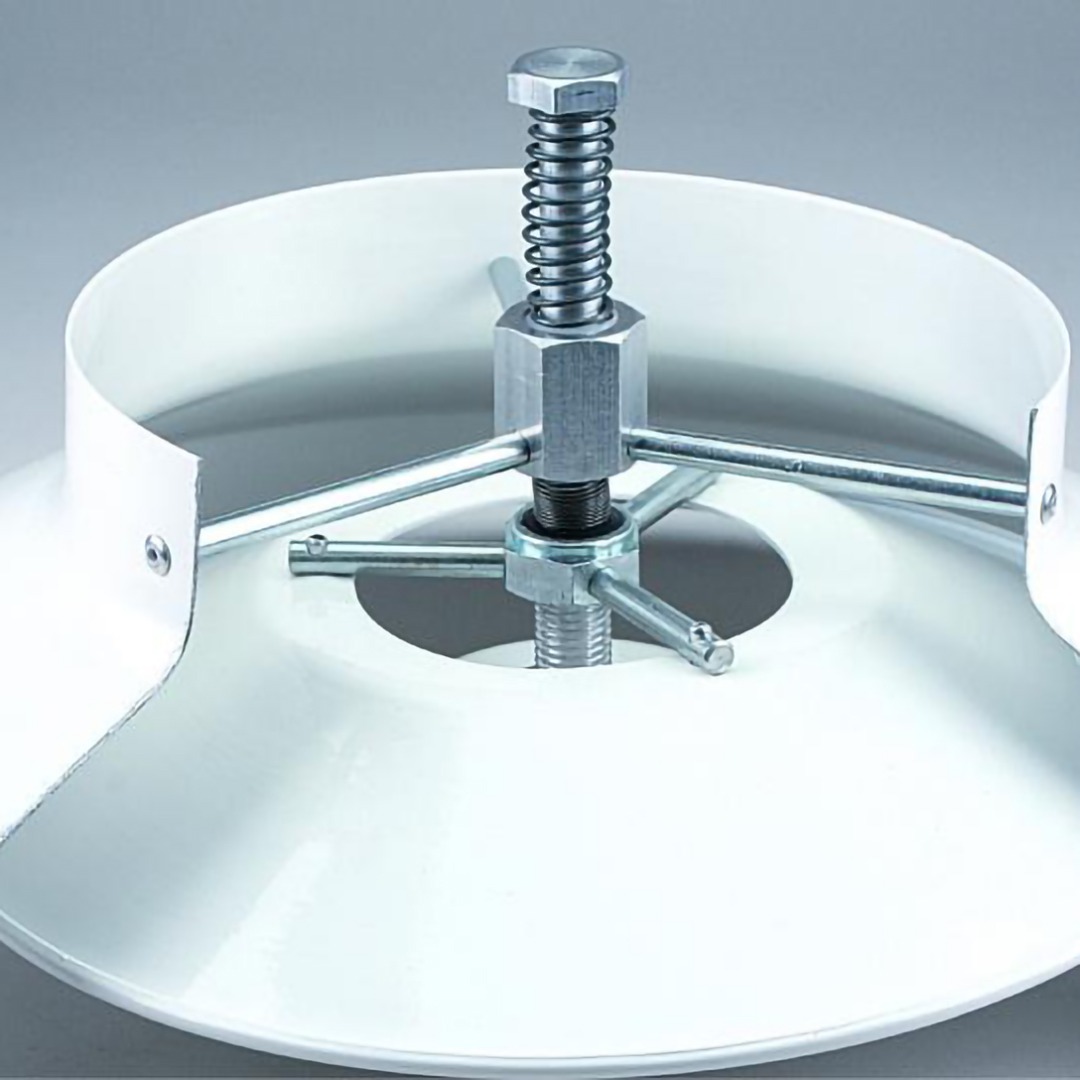KU5 CT: serie di diffusori a coni per soffitto, con diametro da 160 a 5000mm, composti da un cono esterno e da una sezione centrale regolabile con coni con regolazione automatica tramite molla termostatica che regola la posizione dei coni in funzione della temperatura dell'aria immessa
CARATTERISTICHE:
- Cono esterno in alluminio per le versioni standard, in acciaio per le versioni con pannello, coni centrali in alluminio, asta centrale in acciaio.
- Finitura standard verniciata bianco RAL 9010 o RAL 9003, verniciature diverse su richiesta.
- I diffusori della serie KU5-CT vengono normalmente fissati al plenum mediante viti laterali.
- In alternativa la condotta flessibile può essere collegata direttamente al collo del diffusore.
CAMPO DI UTILIZO E REGOLAZIONE:
- I diffusori KU5-CT sono adatti per l'installazione a controsoffitto in ambienti con altezza compresa tra 2,5 e 5 metri, come uffici, negozi, sale riunioni, corridoi, ambulatori e simili.
- Sono adatti esclusivamente per la mandata dell'aria.
- Fornendo aria di raffrescamento i coni centrali si abbassano indirizzando l'uscita dell'aria lungo il soffitto con lancio orizzontale.
- Fornendo aria di riscaldamento i coni centrali si alzano indirizzando l'uscita dell'aria verso il pavimento con lancio verticale.



